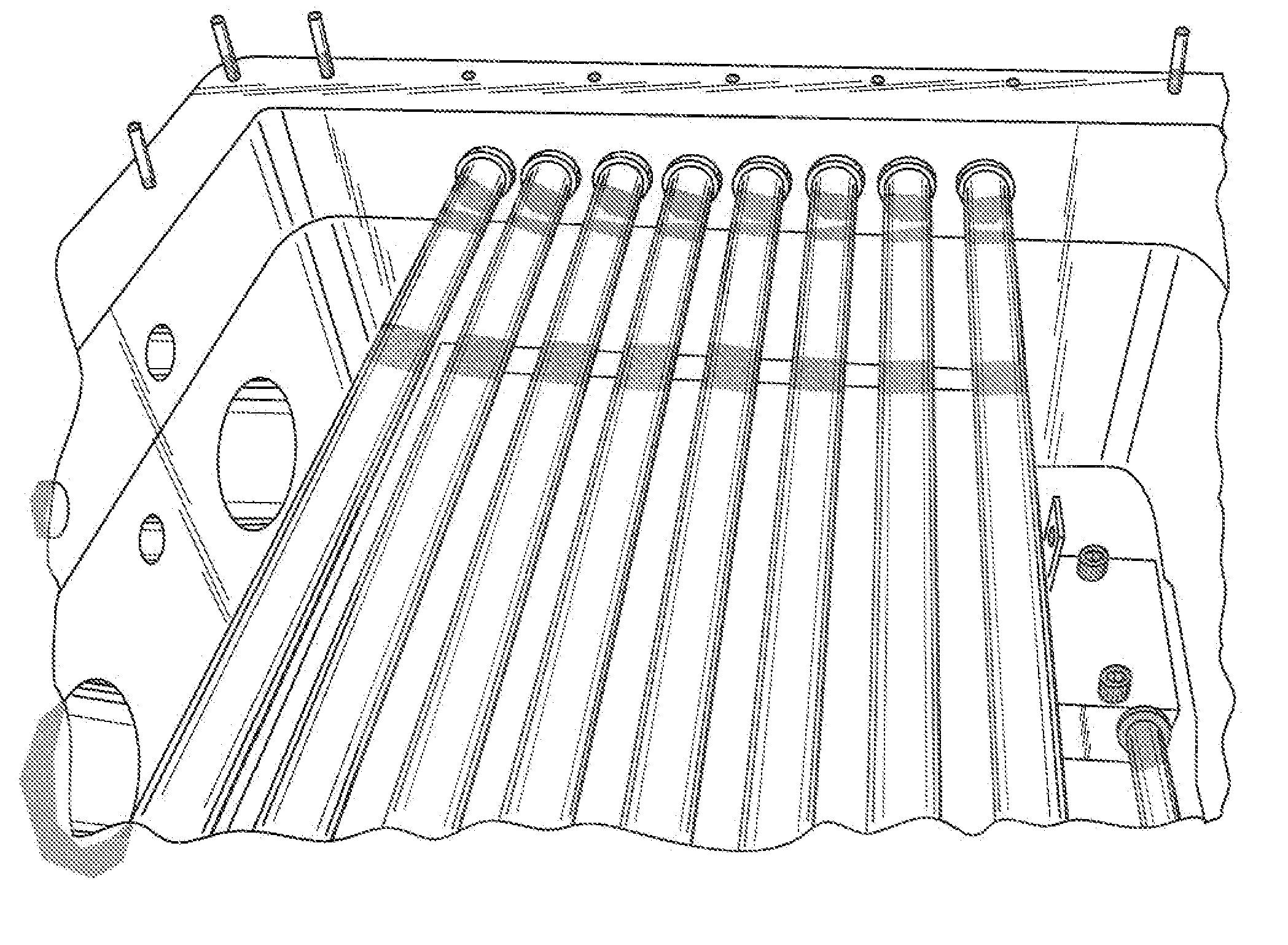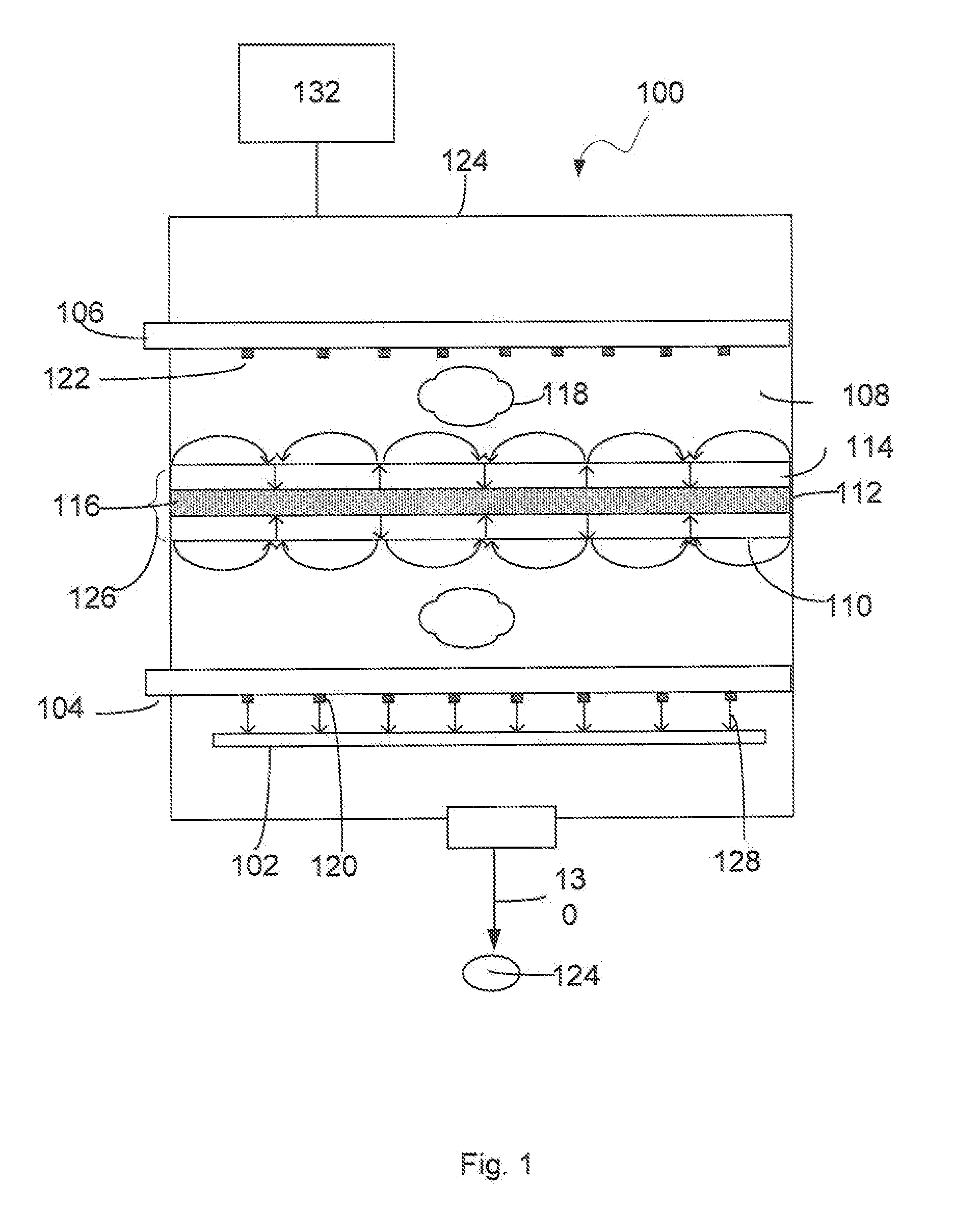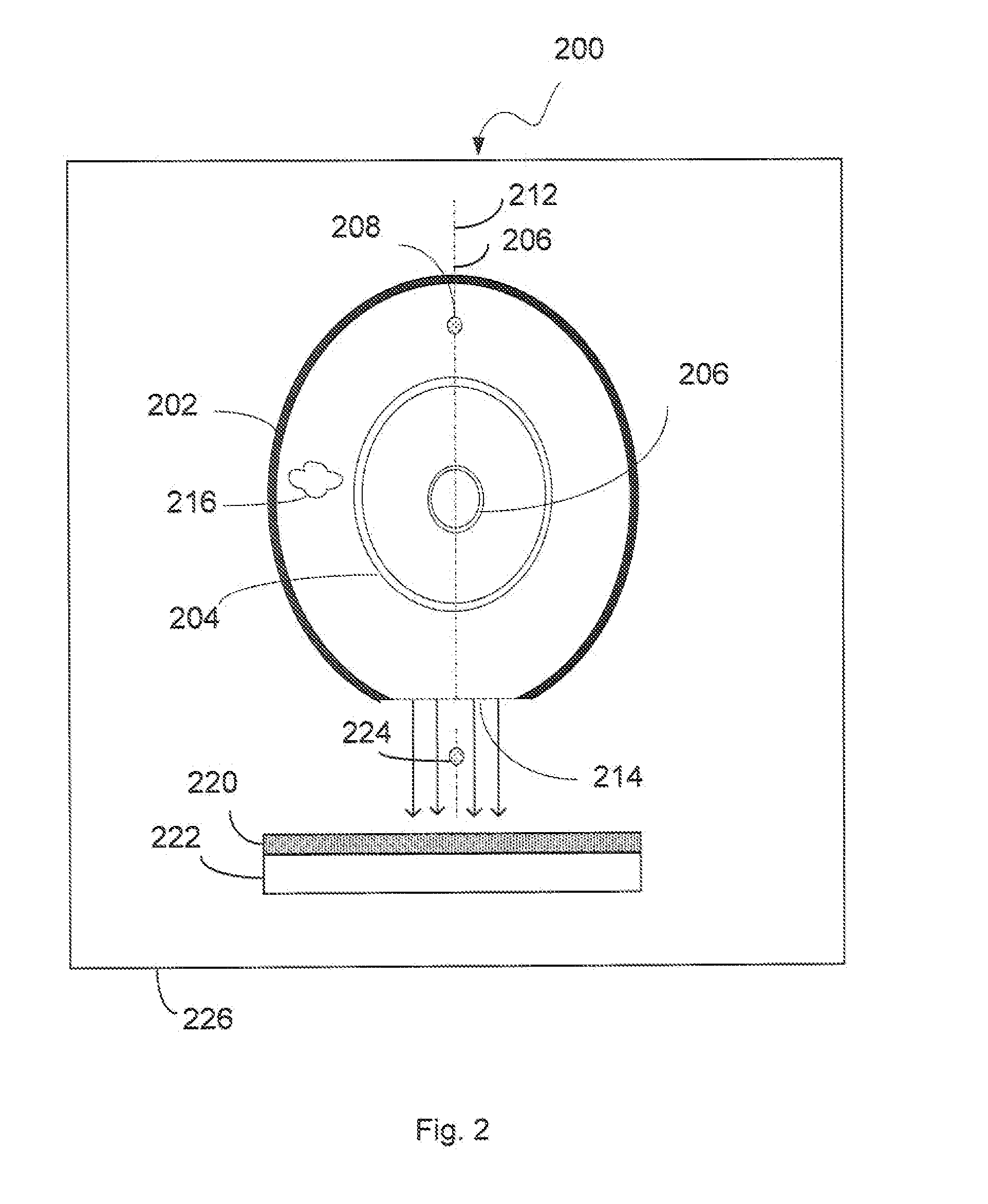Microwave plasma containment shield shaping
- Summary
- Abstract
- Description
- Claims
- Application Information
AI Technical Summary
Benefits of technology
Problems solved by technology
Method used
Image
Examples
Embodiment Construction
1. Overview of Microwave-Assisted Deposition
[0026]Microwave plasma has been developed to achieve higher plasma densities (e.g. ˜1012 ions / cm3) and higher deposition rates, as a result of improved power coupling and absorption at 2.45 GHz when compared to a typical radio frequency (RF) coupled plasma sources at 13.56 MHz. One drawback of using RF plasma is that a large portion of the input power is dropped across the plasma sheath (dark space). By using microwave plasma, a narrow plasma sheath is formed and more power can be absorbed by the plasma for creation of radical and ion species, which increases the plasma density and obtains a narrow energy distribution by reducing collision broadening of the ion energy distribution.
[0027]Microwave plasma also has other advantages, such as lower ion energies with a narrow energy distribution. For instance, microwave plasma may have low ion energy of 0.1-25 eV, which leads to lower damage when compared to processes that uses RF plasma. In con...
PUM
| Property | Measurement | Unit |
|---|---|---|
| Dielectric polarization enthalpy | aaaaa | aaaaa |
| Pressure | aaaaa | aaaaa |
| Shape | aaaaa | aaaaa |
Abstract
Description
Claims
Application Information
 Login to View More
Login to View More - R&D
- Intellectual Property
- Life Sciences
- Materials
- Tech Scout
- Unparalleled Data Quality
- Higher Quality Content
- 60% Fewer Hallucinations
Browse by: Latest US Patents, China's latest patents, Technical Efficacy Thesaurus, Application Domain, Technology Topic, Popular Technical Reports.
© 2025 PatSnap. All rights reserved.Legal|Privacy policy|Modern Slavery Act Transparency Statement|Sitemap|About US| Contact US: help@patsnap.com



